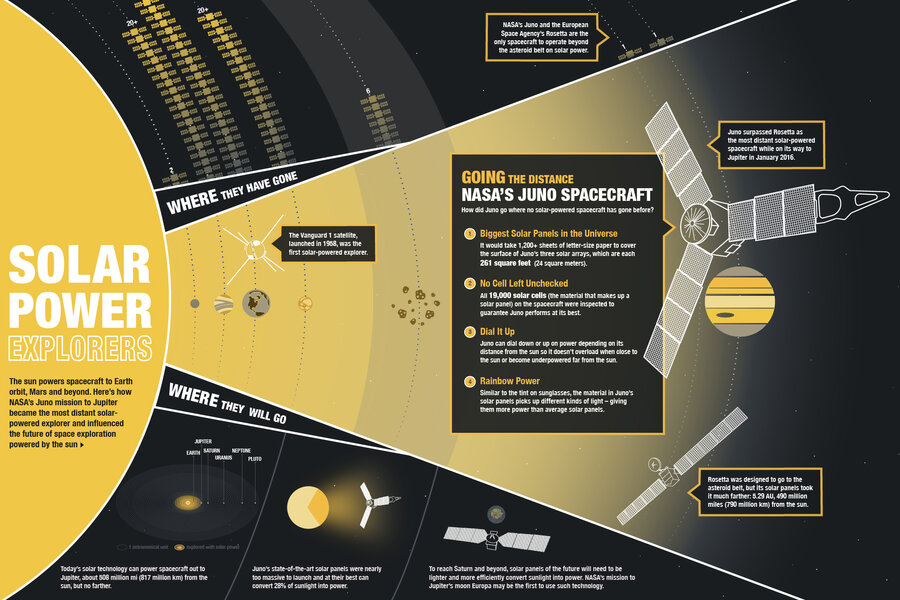Jupiter or bust: Juno spacecraft sets course for gas giant
Loading...
With explorations of Pluto and Saturn under its belt, NASA is preparing for another landmark excursion, this time to our solar system's largest known planet, Jupiter.
NASA reported last week that the Jupiter-bound space probe Juno successfully adjusted its flight path Wednesday, in a maneuver that secured the solar-powered craft's course for the gas giant. It's a journey nearly five-years in the making, and one that's likely to add to our rapidly expanding understanding of not just Jupiter, but of the solar system as a whole and our own place in it.
Juno is expected to arrive at Jupiter on July 4 where it will spend 10 months orbiting the planet and studying the gas giant's dozens of moons and enormous magnetic field.
Scientists hope that Juno will offer the first-ever views from below Jupiter’s clouds and gather information about the origin and evolution of the giant planet. The spacecraft was named after the goddess Juno, who, according to Greek and Roman mythology, was the wife of Jupiter (or Zeus as the Greeks knew him) and able to see his true nature even through the veil of clouds Jupiter formed around himself to hide his mischief.
Juno will be tasked with determining whether the giant gas planet has a solid core, mapping Jupiter's intense magnetic field and its gravitational field, measuring the amount of water and ammonia in the deep atmosphere, and observing the planet's auroras.
Its work will help astronomers understand how giant planets form and their role in the development of the rest of the solar system.
The latest mission will bring back the most detailed information of hundreds of years of study of the planet, starting with observations of Jupiter’s four largest moons (it has at least 50) made by Galileo Galilei in 1610 using an early version of the telescope.
It is also emblematic of a half-century of planetary discovery that with technological advancements in recent years has radically changed the understanding of our “cosmic neighborhood,” as The Christian Science Monitor's Pete Spotts has called it.
“The bottom line is that we’re in the middle of an unbelievable revolution in our understanding of what our solar system is all about,” Jim Green, who heads NASA’s Planetary Science Division, told The Monitor in September.
More than 180 robotic data-gathering missions to the moon and beyond had been launched by the United States, Russia, Europe, Japan, China, or India by 2015. And increasingly sophisticated telescopes have provided a sharper view of objects previously unseen.
These have taught us that asteroids have moons, that the ones covered in ice have oceans below, and that at least one moon, Saturn’s Enceladus, experiences regular eruptions that eject some of that water into space, a potential sign of habitability and life. Astronomers have learned that other planets are made up from the same stuff that makes Earth, and that beyond the inner planets there is evidence for recent or current geological activity, similar to what we find on Earth.
Astronomers consider the lessons gleaned through the exploration of the solar system as a critical means to understanding the origins and future of life on Earth.
“It’s of fundamental importance for the survival of life on this planet that we know what our neighborhood is,” Dr. Green told the Monitor.






